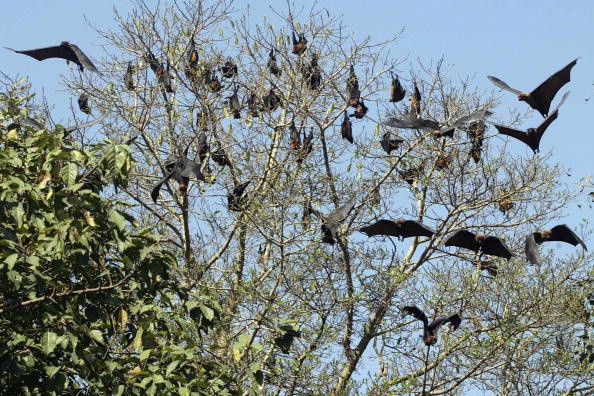Vampire bats live on just blood, which is abundant in protein but low in other nutrients. According to The Scientist Magazine, a recent study suggests that "missing" genes may explain how vampire bats live on nothing but blood meals from the open wounds of their victims in the middle of the night.

Vampire Bats' Diet
Researchers compared the genome of the common vampire bat (Desmodus rotundus) to those of 25 other bat species in a new study published on the preprint website bioRxiv on Oct. 19.
Michael Hiller, a genomicist at the LOEWE Centre for Translational Biodiversity Genomics in Germany is co-author of the study.
Hiller told The Scientist the analysis showed that D. rotundus don't have functional copies of 13 genes that can be discovered in other bats; either these missing genes are entirely absent from the genome of vampires or have a lot of mutations that they are not likely to make functional proteins.
And it turns out that vampire bats may have benefited from the loss of these 13 genes. According to the research, which hasn't been peer-reviewed, losing the genes may enable them to access nutrients from blood in ways that other bats can't.
The Missing Genes
Two of the missing genes in Vampire Bat, for example, control the release of insulin from the pancreas, which is a hormone that controls blood sugar levels by transporting glucose into cells.
Hiller told The Scientist that previous research has revealed that vampire bats produce very little insulin, which makes sense given the low carbohydrate content of the blood they swallow. He believes that the bats' lack of insulin secretion helps them save the little sugar they ingest by keeping it accessible in the bloodstream.
According to scientists, the vampire bat genome is also missing REP15, a gene that is typically active in gastrointestinal cells. By increasing the number of "doors" that iron may pass through on the cell surface, losing this gene would likely increase the quantity of iron that can sneak into the bats' gastrointestinal cells.
According to the study's authors, these iron-laden cells would cycle over more rapidly than those in ordinary bats, allowing vampires to effectively rid themselves of the entire iron they had collected via their meals and prevent metal poisoning.
According to The Scientist, another missing gene, CTRL, would normally reduce the activity of trypsin, an enzyme involved in protein digestion and absorption. Trypsin activity is anticipated to rise in vampire bats without CTRL, assisting them in breaking down their protein-rich blood diets.

The scientists noticed that some of the other missing genes seem to be involved in the digestion and metabolism of bats, while others appear to be relevant to the bats' mental capacity and eyesight.
Furthermore, several of the missing genes have unclear implications on bat physiology, necessitating additional research.
They'll perish if they don't locate blood for two nights in a row. Some vampire bats, on the other hand, seem to be generous. In return for grooming, well-fed bats would often regurgitate-or spit up-blood to share with others.
Female bats in captivity seem to be more welcoming to new moms. Other bats have been witnessed feeding the mother for around two weeks after the youngster is born.
Related Article : Vampire Bats With Infection Found to Self-Isolate From Their Friends but Still Care for Their Family and More Bat Facts
For more news, updates about vampire bats and similar topics don't forget to follow Nature World News!
© 2025 NatureWorldNews.com All rights reserved. Do not reproduce without permission.





